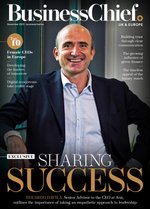Widening demand for wearable tech will see its value treble by 2022

Increasing sophistication, use cases and convenience are key factors behind the prediction that the wearable tech market will treble its 2016 value by 2022.
From healthcare to military and defence sectors, this technology is not only benefiting consumers on a personal level, but also large swathes of industry, helping businesses to save time, enable real-time data monitoring, and ensure operational efficiency.
Fitness tracking, security profiling, and network monitoring are some of the major factors contributing towards the higher adoption of wearable technology. The market is expected to reach a market value of $57.7 billion by 2022 from $19.6 billion in 2016, growing with a notable CAGR of 16.2 percent during the forecast period.
Increase in healthcare awareness, portable and convenient usage of wearables, and entry of large smartphone manufacturers are expected to drive growth in the wearable technology industry. Demand for sophisticated devices with innovative features further supplements the market growth.
However, factors such as security concerns and high cost of manufacturing in the global wearable technology industry are likely to hamper the market growth. Moreover, due to increase in smartphone penetration, the demand for wearable technology is expected to grow at a faster rate. Furthermore, the introduction of smart shirts and smart rings, owing to rapid technological advancements are expected to supplement the growth of wearable technology market.
Key players operating in the market include Apple, Fitbit, Garmin, Adidas, Nike, Samsung Electronics, Sony, Huawei, LG and Motorola.
Smart watches driving growth
The smart watch market is expected to grow with the fastest CAGR of 19.9 percent during the forecast period and is likely to reach a market size of $17.9 billion by 2022. Factors such as large players entering the global market, advancement in research and development, higher manufacturing cost, demand for high end devices, increasing competition, and standardization will have a significant impact on the smart watch market.
The key strategies adopted by various players in the wearable technology market are analysed based on the competitive scenario of the market. For instance, in September 2016, launched the vivofit jr., which is an activity tracker for kids to motivate and encourage them for fitness. The design for this product is durable and has a long battery life.
Many companies are collaborating with leading jewellery brands to enhance the appearance of wearable technology. For instance, in January 2016, Huawei and the jewellery brand Swarovski Zirconia, launched a new range of smart watches. These are available in two stylish options made exclusively for women. The watch comes with Italian leather straps and is compatible with both Android and IOS.
The full report, published by Allied Market Research, can be purchased at: www.reportbuyer.com/product/4883712
Featured Articles
SAP has announced it has appointed a new President for a newly-created EMEA region, aiming to make the most of the opportunities of cloud and AI technology
Technology giant SAP has expanded its portfolio with the acquisition of LeanIX, a leader in enterprise architecture management (EAM) software
To help businesses achieve increased productivity, Siemens and Microsoft are deepening their partnership by showcasing the benefits of generative AI

